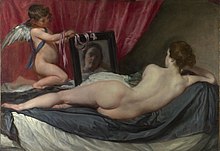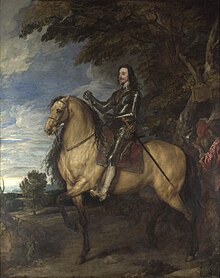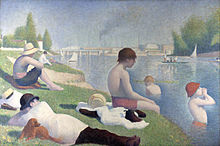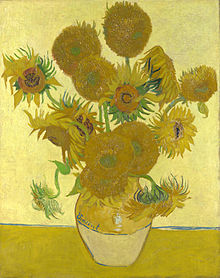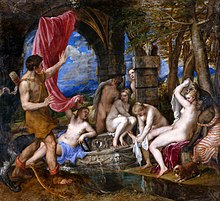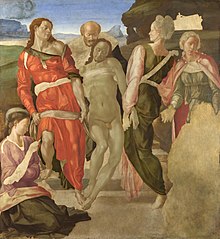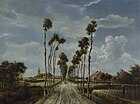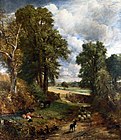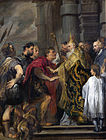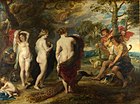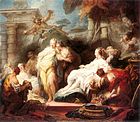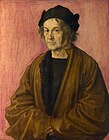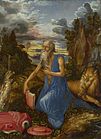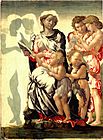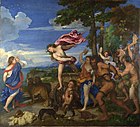
Baroque painting is the painting associated with the Baroque cultural movement. The movement is often identified with Absolutism, the Counter Reformation and Catholic Revival, but the existence of important Baroque art and architecture in non-absolutist and Protestant states throughout Western Europe underscores its widespread popularity.

The Museo del Prado, officially known as Museo Nacional del Prado, is the main Spanish national art museum, located in central Madrid. It houses collections of European art, dating from the 12th century to the early 20th century, based on the former Spanish royal collection, and the single best collection of Spanish art. Founded as a museum of paintings and sculpture in 1819, it also contains important collections of other types of works. The numerous works by Francisco Goya, the single most extensively represented artist, as well as by Hieronymus Bosch, El Greco, Peter Paul Rubens, Titian, and Diego Velázquez, are some of the highlights of the collection. Velázquez and his keen eye and sensibility were also responsible for bringing much of the museum's fine collection of Italian masters to Spain, now one of the largest outside of Italy.

The Norton Simon Museum is an Art Museum located in Pasadena, California. It was previously known as the Pasadena Art Institute and the Pasadena Art Museum and displays numerous sculptures on its grounds.
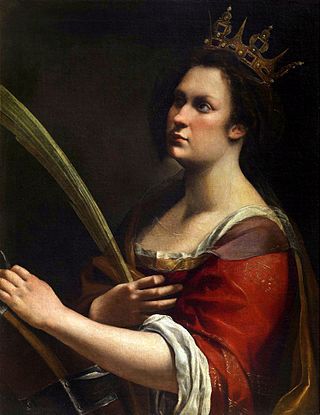
In art history, "Old Master" refers to any painter of skill who worked in Europe before about 1800, or a painting by such an artist. An "old master print" is an original print made by an artist in the same period. The term "old master drawing" is used in the same way.

The Kunsthistorisches Museum is an art museum in Vienna, Austria. Housed in its festive palatial building on the Vienna Ring Road, it is crowned with an octagonal dome. The term Kunsthistorisches Museum applies to both the institution and the main building. It is the largest art museum in the country and one of the most important museums worldwide.

The Alte Pinakothek is an art museum located in the Kunstareal area in Munich, Germany. It is one of the oldest galleries in the world and houses a significant collection of Old Master paintings. The name Alte (Old) Pinakothek refers to the time period covered by the collection—from the fourteenth to the eighteenth century. The Neue Pinakothek, re-built in 1981, covers nineteenth-century art, and Pinakothek der Moderne, opened in 2002, exhibits modern art. All three galleries are part of the Bavarian State Painting Collections, an organization of the Free state of Bavaria.

The Thyssen-Bornemisza National Museum, or simply the Thyssen, is an art museum in Madrid, Spain, located near the Prado Museum on one of the city's main boulevards. It is known as part of the "Golden Triangle of Art", which also includes the Prado and the Reina Sofía national galleries. The Thyssen-Bornemisza fills the historical gaps in its counterparts' collections: in the Prado's case this includes Italian primitives and works from the English, Dutch and German schools, while in the case of the Reina Sofía it concerns Impressionists, Expressionists, and European and American paintings from the 20th century.

The Gemäldegalerie is an art museum in Berlin, Germany, and the museum where the main selection of paintings belonging to the Berlin State Museums is displayed. It was first opened in 1830, and the current building was completed in 1998. It is located in the Kulturforum museum district west of Potsdamer Platz.

The Musée Fabre is a museum in the southern French city of Montpellier, capital of the Hérault département.
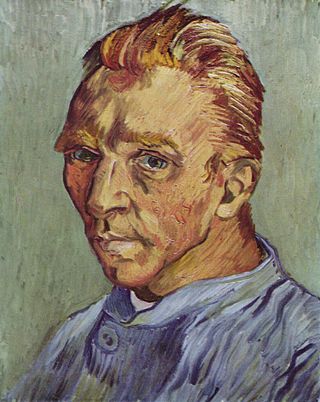
A self-portrait is a portrait of an artist made by themselves. Although self-portraits have been made since the earliest times, the practice of self-portraiture only gaining momentum in the Early Renaissance in the mid-15th century that artists can be frequently identified depicting themselves as either the main subject, or as important characters in their work. With better and cheaper mirrors, and the advent of the panel portrait, many painters, sculptors and printmakers tried some form of self-portraiture. Portrait of a Man in a Turban by Jan van Eyck of 1433 may well be the earliest known panel self-portrait. He painted a separate portrait of his wife, and he belonged to the social group that had begun to commission portraits, already more common among wealthy Netherlanders than south of the Alps. The genre is venerable, but not until the Renaissance, with increased wealth and interest in the individual as a subject, did it become truly popular.
Taschen Basic Art is a best selling art collection books, published by Taschen, starting in 1985. Each book looks at a different artist, with a biography, and illustrations of their work. The books are published as affordable hardcover books of 21 x 26 cm. As of 2022, 78 titles had been published. Similar series entitled Taschen Basic Architecture, Taschen Basic Cinema and Taschen Basic Photographies were started after the success of the Basic Art series.
Events from the year 1637 in art.
Events from the year 1629 in art.
100 Great Paintings is a British television series broadcast in 1980 on BBC Two, devised by Edwin Mullins. He chose 20 thematic groups, such as war, the Adoration, the language of colour, the hunt, and bathing, picking five paintings from each. The selection ranges from 12th-century China through the 1950s, with an emphasis on European paintings. He deliberately avoided especially famous paintings, such as Leonardo da Vinci's Mona Lisa or John Constable's The Haywain. The series is available on VHS and DVD.
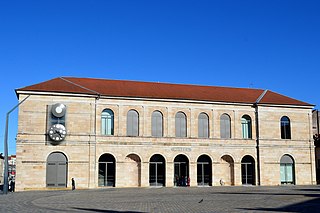
The musée des Beaux-Arts et d'Archéologie in the French city of Besançon is the oldest public museum in France. It was set up in 1694, nearly a century before the Louvre became a public museum.

The Staatliche Kunsthalle is an fine art museum in Karlsruhe, Germany. Its collection consists of works by mainly German, French, Flemish and Dutch masters from the past eight centuries. The museum was conceived in the early 19th century by Heinrich Hübsch as a “Gesamtkunstwerk” combining architecture, painting and sculpture to house the collection of the Grand Duke of Baden.

The Musée Bonnat-Helleu is an art museum in Bayonne, Nouvelle-Aquitaine, France. The museum was created in 1901 when Bayonne-born painter Léon Bonnat gave his extensive personal collections of art – notably an exceptional drawing collection – as well as many of his paintings to the City of Bayonne. Subsequent donors enriched the collections of the Bonnat Museum with major gifts in 1936, 1989, 1997 and 2010, making its holdings one of the largest collections of art in southern France.
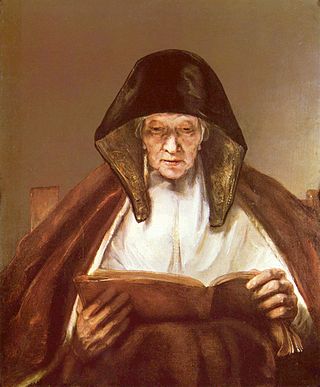
The art collection of the Duke of Buccleuch is mostly European. The holdings, principally collected over a period of 300 years, comprise some 500 paintings, 1,000 miniatures and an enormous selection of objets d'art including furniture, porcelain, armour, jewellery and silverwork. The vast majority of the collection is divided between three principal locations: Bowhill House, Drumlanrig Castle and Boughton House.

The Fondation Custodia is an art collection in the 7th arrondissement of Paris, focusing on European Old Master works, including works by Dutch, Flemish, Italian and French artists. It was founded in 1947 by the collector and art historian Frits Lugt and his wife Jacoba Lugt-Klever to house their collection of drawings, prints and paintings. Located at 121 rue de Lille, it occupies the Hôtel Turgot, an 18th-century mansion.

The Calvet Museum is the main museum in Avignon. Since the 1980s the collection has been split between two buildings, with the fine arts housed in an 18th-century hôtel particulier and a separate Lapidary Museum in the former chapel of the city's Jesuit college on rue de la République. It is one of the museums run by the Fondation Calvet.

